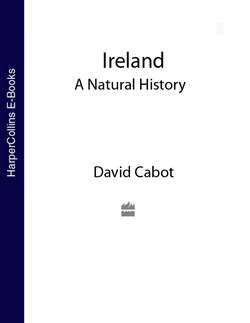Читать книгу Collins New Naturalist Library - David Cabot - Страница 9
ОглавлениеEditors’ Preface
Ireland has a long and proud tradition of natural history, and some of its leading figures have made outstanding contributions to the knowledge and understanding of its important segment of the European flora and fauna. Some of its most distinctive features have achieved fame as gems of the international scene of natural wonders: the fantastic limestone pavements of the Burren with their unique plant assemblage; the desolate blanket bogs and rocky heaths of Mayo and Connemara; the magnificent mossy oak woods of Kerry and Cork; the spectacular seabird islands and headlands; and the greatly varied series of lakes and fens among both lowlands and mountains.
There is a large literature on all this, yet few Irish natural historians have tackled the subject as a whole. Geraldus Cambrensis ambitiously had a shot within his all-embracing work on Ireland Topographia Hiberniae around 1188, but it was not until 1944 that the doyen of Irish naturalists, Robert Lloyd Praeger, tried again with his Natural History of Ireland. This is, as its sub-title said, ‘a sketch of its flora and fauna’, and though valuable as a summary, it still left a need for something much more comprehensive. The New Naturalist Editors were mindful of the scope for a modern treatment of the subject within the series, but it seemed to require such a breadth and depth of knowledge and insight that a suitable author was not easily to be found.
Happily, David Cabot proved to be just the person for the task. He has applied his unrivalled all-round personal experience of Ireland, its wildlife and physical features, and his assiduous literature research, to the compilation of this volume. Since plants and animals know no political frontiers, it has the particular merit of dealing with Ireland as a geographical and ecological whole. Little escapes the author’s breadth of grasp, and enthusiasts for all the main groups of plants and animals will find much to excite and inform their interest. The main habitats are all comprehensively explored, and the mysterires of the special Irish features – such as turloughs, slobs and callows – revealed. For those craving further knowledge, a very full list of references is given. David Cabot’s book does justice to the rich variety of Irish wildlife, and its illustrations convey the similarly diverse beauty of the country it inhabits.
As well as providing an in-depth treatment of the fascinating Irish flora and fauna, their habitats and their history, Ireland examines the topical concerns of nature conservation and human impact. We are delighted to present it as a much-needed and worthy addition to the other regional works in the series, and as a tribute to the many generations of Irish naturalists whose labours have helped the author to paint this portrait.
